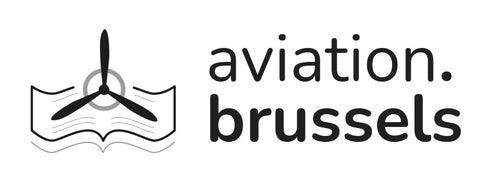Lockheed Constellation in colour








Prix régulier 29,00 € TTC 6%
Characteristics
| Book cover finish | Hardcover ( square back binding ) |
| Condition | Used very good |
| Number of pages | 92 |
| Published date | 2005 |
| Language | English |
| Size | 27 x 30 x 0.2 cm |
| Author | Scott Henderson |
| Editor | C. Hymers and Roy James |
Description
The credit for the introduction into service of arguably the most aesthetically beautiful piston-engined airliner ever designed can be laid at the door of Howard Hughes, the famous playboy, record-breaking pilot, film producer and industrialist. It was on behalf of his airline, Transcontinental & Western Air, later to become Trans World Airlines, that he decided to approach US airframe manufacturers in 1939, with the request for a new design of the airliner that would be able to fly coast to coast non-stop in the USA, at a speed of around three hundred miles per hour with a maximum range of 3,500 miles.
At the time of this approach, the twin-engined Douglas DC3 sleeper transports had been in service for a mere three years, and even though it could fly from coast to coast, it took a maximum of 17–18 hrs and at least three stops to achieve this. Lockheed decided to submit a proposal to build a four-engined aircraft of elegant design, to be called the Constellation, and this was accepted by Hughes. Hughes then negotiated a tough contract with Lockheed which prevented the manufacturer from selling the aircraft to any other airline for a period of two years after the entry of service.
The prototype was completed under the leadership of designer C. L. Kelly Johnson by the end of 1942, by adapting a current design he was working on called the Excalibur, developing it into the L-049 Excalibur. It was renamed the Constellation and the first flight took place on 9 January 1943. Unfortunately, the airlines, which by this time were beating a path to Lockheed’s door, discovered that the US Army Air Force had decided to incorporate all Constellation production into military service for the duration of the Second World War.
The prototype Constellation registered NX25600 originally ordered by TWA was taken over by the US Army and painted in olive-drab camouflage and designated C-69-1-LO. It made its maiden flight on 9 January 1943 from the Lockheed Air Terminal in Burbank, California.
After hostilities had ended, Lockheed developed the Constellation through series L-649 and L-749, providing improved performance and accommodation and on development of turbo-compound engines, faster speed and efficiency in the form of the L-1049 Super Constellation and finally. On to the ultimate propliner, the L-1649 Starliner.
Connie was also adopted by both the US Navy and Air Force in large numbers and used for Airborne Early Warning radar, electronic, atmospheric research and weather reconnaissance, maritime reconnaissance, airborne TV and Radio transmitter station, engine test beds, general transport of troops and supplies, and many other unusual and special duties including support for the Blue Angels display team.
The Super Constellation was also operated by the French, Indian and Indonesian Air Forces and also the Indian Navy.
The total number of Constellations built was as follows: –
L-C69/L-049 Constellations = 88 L-6491L-749 Constellations =145 L-1049 Super Constellation = 579 L-1649A Starliner = 44 A grand total of 856 aircraft were delivered.
At the time this book was being written, the Constellation was making a comeback within the preservation movement. Two aircraft were actively flying in the US, a L-1049H Super Constellation based at Kansas City in full TWA colours, and C-121A in full-MAT colours based at Avra Valley, Arizona. There are also two more flying in Europe; ex-C-121C Super Constellation (N7354) based at Basil in Switzerland, and the Netherlands ex-C121A (N749VR) restored to full KLM early livery based on the Dutch Aviodrome Museum. Last but not least, Australia’s Historical Aviation Restoration Society fly their beautiful ex-C-121C in full Qantas colours on the Australian airshow circuit. There are also a number of Constellations which are in potential airworthy condition including two Starliners so who knows what the future may bring.








